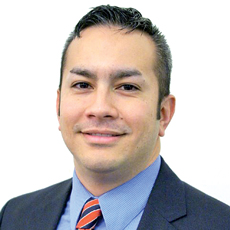
For many years in Pennsylvania there really was no difference between assisted living and PersonalCare. They were essentially synonymous, interchangeable terms.
However, most facilities referred tothemselves as “assisted living” rather than a “personal care home” because it sounded more pleasantand inviting. But if you asked to see their provider license issued by the Department Public Welfare, every single provider in PA would have handed you a piece of paper that clearly stated they werea Personal Care Home.
That all changed in January 2011. That’s when the Pennsylvania DPW Office of Long-Term Living beganto license Assisted Living Residences separately from Personal Care Homes. However, manyconsumers and even healthcare professionals aren’t aware or don’t fully understand the difference. It is confusing to many people.
This began in 2007, when Senate Bill 704 was signed and it defined and established assisted living as a separate form oflong-term care in Pennsylvania. But why?
First, the state felt it needed to do a better job of balancingpublic funding of institutional care with home and community programs for older Pennsylvanians.Second, the philosophy of more choice was essential. According to an AARP study, “95% of olderPennsylvanians preferred alternatives to nursing home placements,” plus “another option was neededfor many individuals who couldn’t live at home anymore, but didn’t require round the clock nursingcare.” The study also said national research showed “assisted living facilities would cost between one-half and two-thirds of the cost of daily skilled nursing care.”
Last, the bill was to be a starting point tohelp shift Medicaid (Medical Assistance) dollars to assisted living and away from nursing homes andtherefore reduce the reliance on the much more expensive alternative.Essentially assisted living was created to bridge the gap in care between Personal Care Homes andskilled nursing homes, but at a lower cost than nursing and in a setting that could allow residents to “agein place” for a longer period of time.
Specific DifferencesAssisted Living Residences are licensed under 55 Pa. Code, Chapter 2800 by the Office of Long-TermLiving. Though it does provide similar care to Personal Care Homes, they do have the capability to carefor people that require heavier care for a longer period of time. Personal Care Home regulationsmaintain certain limitations on the care and setting that they can provide.According to the Office of Long-Term Living, Assisted Living Residences are different from a PersonalCare Home in 3 ways: concept, construction and level of care. The concept focuses on allowing aresident to “age in place” for a longer period of time before having to move to a nursing facility whentheir needs increase. Next, ALR construction would require larger units, private bathrooms, and the“capacity” for kitchen facilities. This model would allow for more privacy and maximum independence.
Regarding level of care, these residences would provide more assistance for a resident whose needs become too greatfor a Personal Care Home. Two examples of a Personal Care Home resident needing to move to anursing facility could include the following: If the resident requires multiple caregivers to transfer themfrom their bed to the toilet, or if another resident needed help emptying their catheter. However, ifthose two people lived in an Assisted Living Residence they could remain there because of the requiredhigher staffing ratios and specialized training for needs such as catheter care.Truthfully, many larger Personal Care Homes do meet some of the ALR requirements, particularly in thearea of construction, but also in concept of aging in place. This is achievable by the resident hiringsupplemental care to assist them during the day along with adaptive equipment or modifications totheir rooms.
The Current Outlook
The introduction of Assisted Living Residences in PA as a cheaper alternative to nursing homes that willallow seniors to delay or avoid a move to nursing facility in essence is great. However, the reality is alittle less prosperous, at least presently. Currently in Pennsylvania, there are only 33 licensed AssistedLiving Residences spanning just 19 counties as compared to 1,221 Personal Care Homes in just aboutevery county¹.
Why such a low number after so long? First off, though it’s been four years since the legislation wasenacted, it’s still relatively a little early. For Personal Care Homes, the consideration to make the changeto an Assisted Living Residence or even offer both on one campus is not an overnight decision. Manycommunities would have to make structural changes to their buildings, enlarge apartments, add staff,provide additional training, plus put forth a major marketing and promotions effort.
All of this, of course,costs money and takes time to make happen. Secondly, the prospect of reimbursement throughMedicaid is just is not there due to a lack of state funding. Lastly, there is still hesitation by someproviders to wait and see how those that have obtained their Assisted Living Residences license fair inthe market and perform under the new regulations.Time will tell whether the growth and viability of the Assisted Living Residences will work in congruencewith Personal Care Homes and nursing homes in Pennsylvania. For more information please visit thePennsylvania Department of Human Services website: www.dhs.state.pa.us
Matthew J. Gallardo, BASW, CCP, is Director of Community Engagement and Coaching at Messiah Lifeways.



